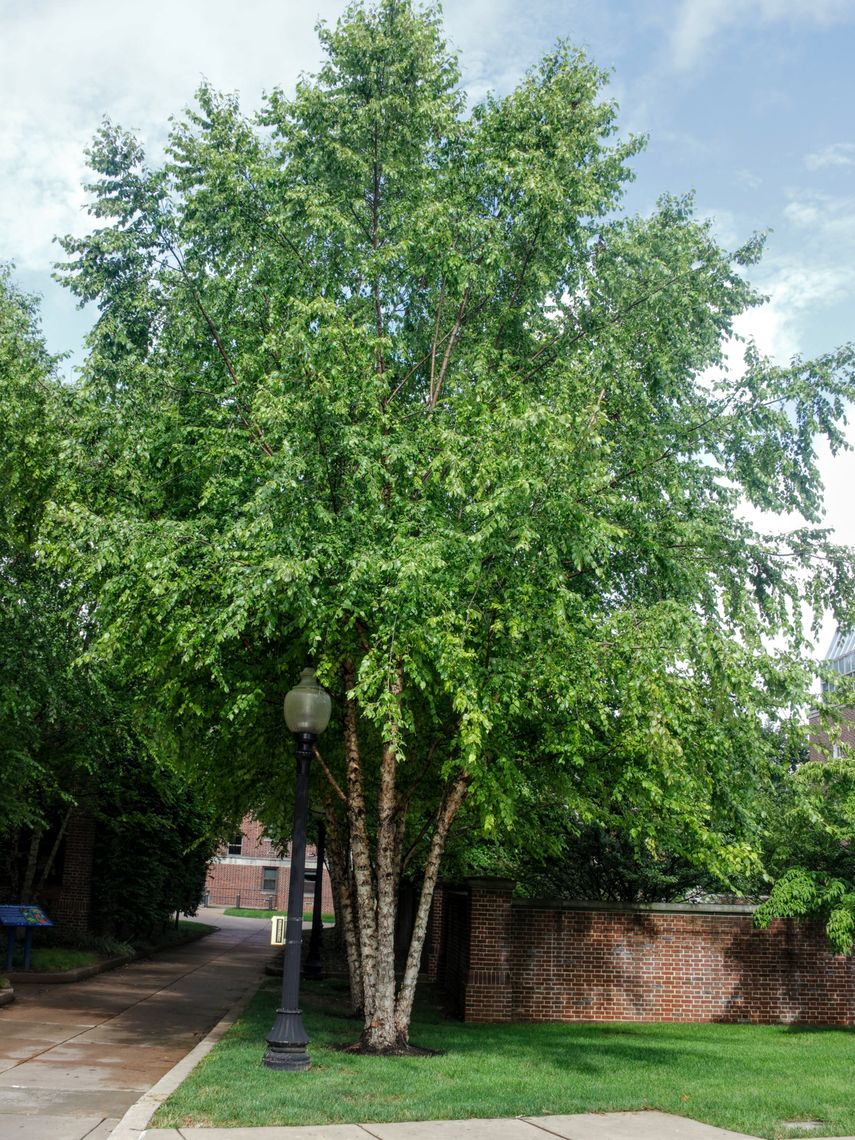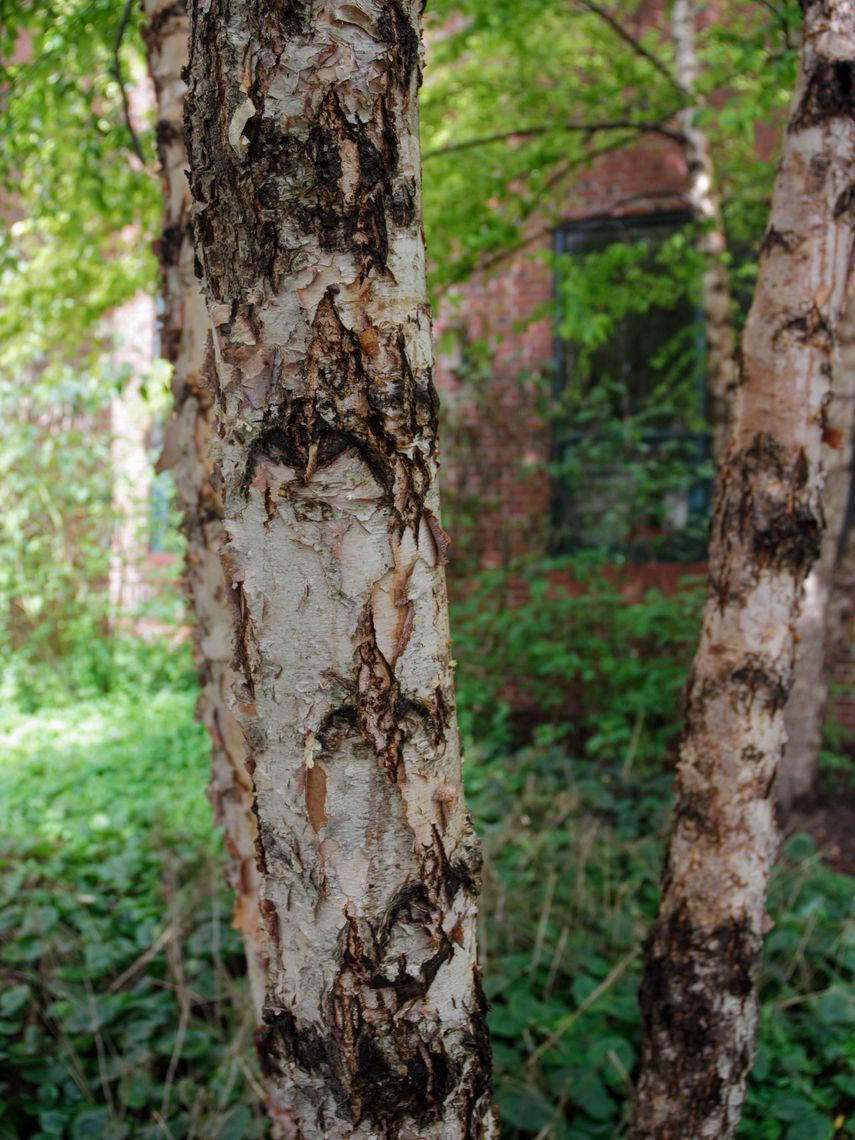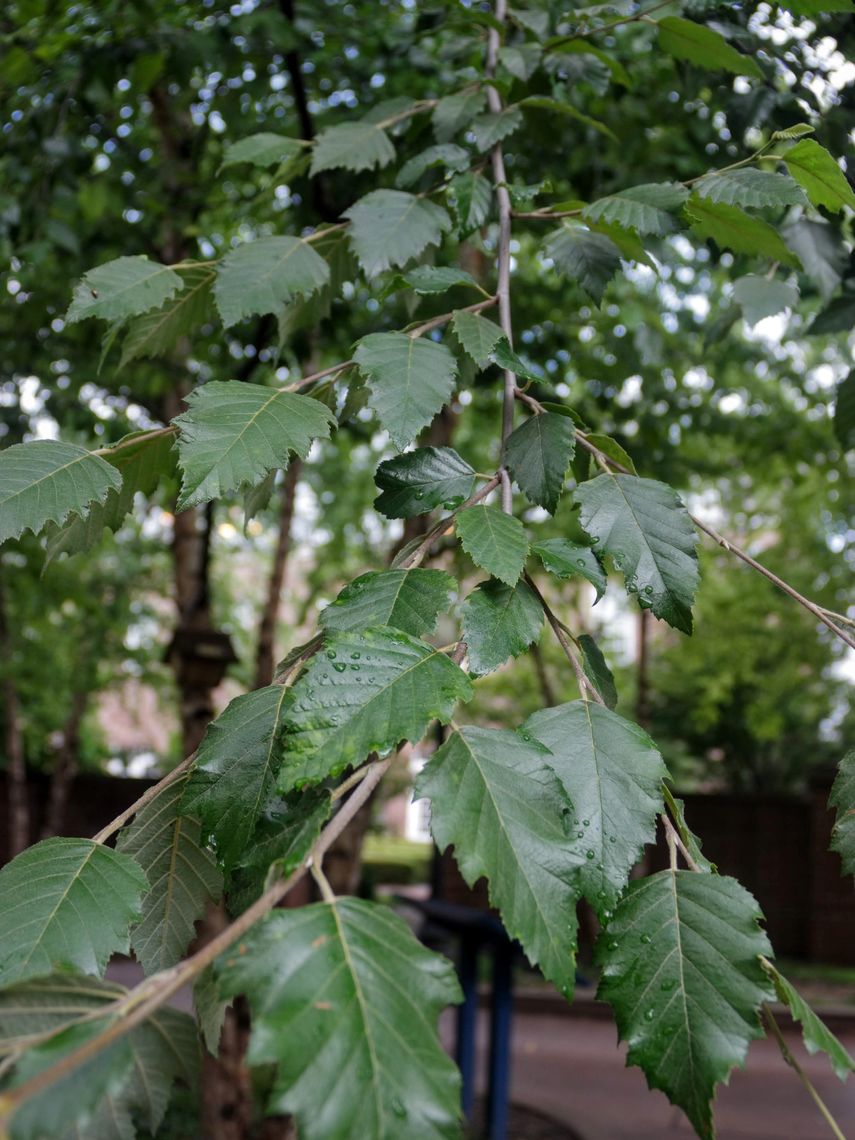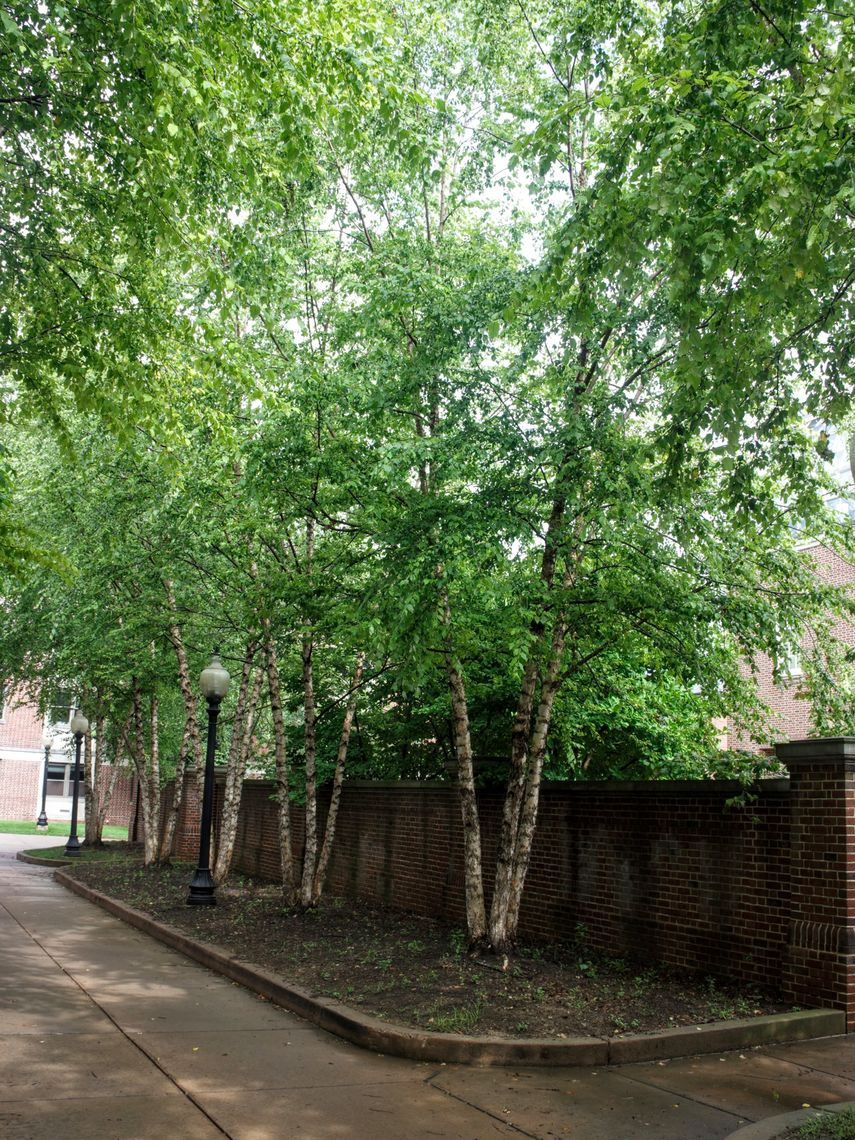River Birch (Betula nigra)
The river birch is a fast growing tree that, in the wild, is often found in floodplains, swampy bottomlands, and along streams. It is adaptable to other soil conditions as well. Its leathery green leaves are prominently toothed and diamond shaped. The river birch has exfoliating bark that is cinnamon-brown in color, revealing lighter colored bark underneath. This tree attracts game birds, insect pollinators, small mammals, and songbirds.
Family: Betulaceae (Birch)
Characteristics: The 1.5-inch to 3.5-inch-long leaves are leathery, prominently toothed, diamond-shaped, and dark green with light undersides. In the fall, leaves turn yellow. Flowers appear as long, droopy, yellow-brown male catkins, or smaller, green, upright female catkins. Bark is red-brown and exfoliates, exposing the lighter inner bark. This tree has a pyramidal or oval shape when young and becomes rounded with age. It can grow as a single or multi-stemmed tree and has slightly drooping branches. This tree grows to 40-70 feet high and wide.
Foliage: Deciduous (leaves lost seasonally)
Geographic Origin: Eastern North America (native)
Cultivation Notes: Requires low maintenance. Does best in full sun and prefers acidic, wet, and well-drained soils. This species is very heat tolerant, though may be sensitive to droughts. The river birch is one of the most disease-free birches.
Number on Campus: 64
Sources: Dirr, Morton Arboretum, Missouri Botanical Garden




